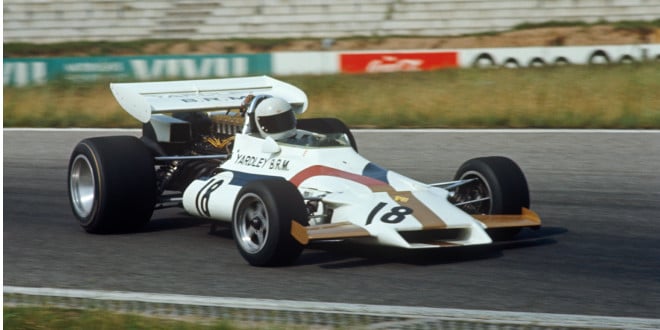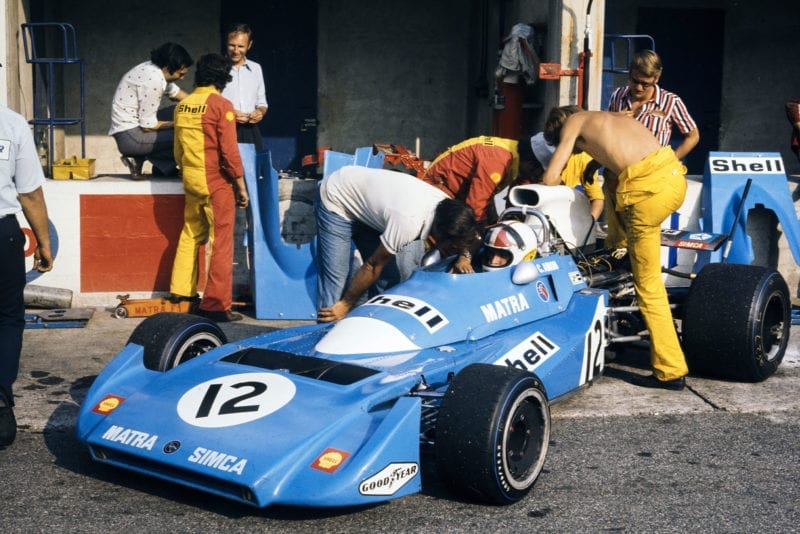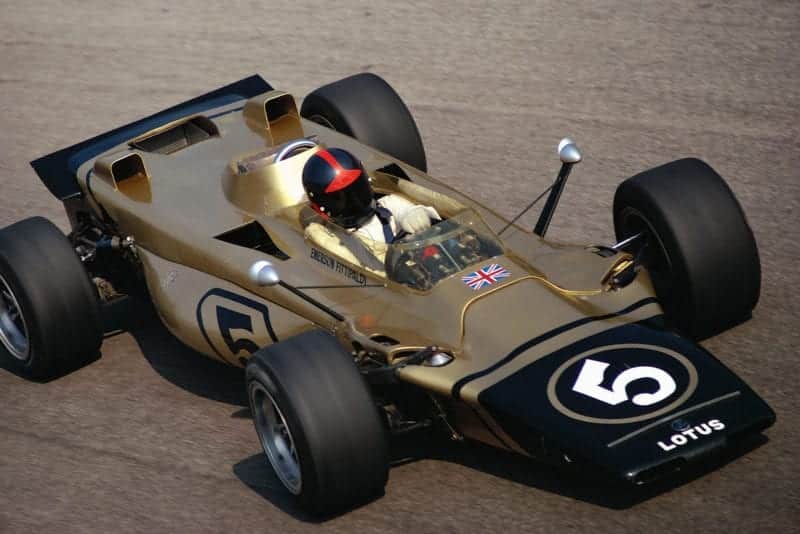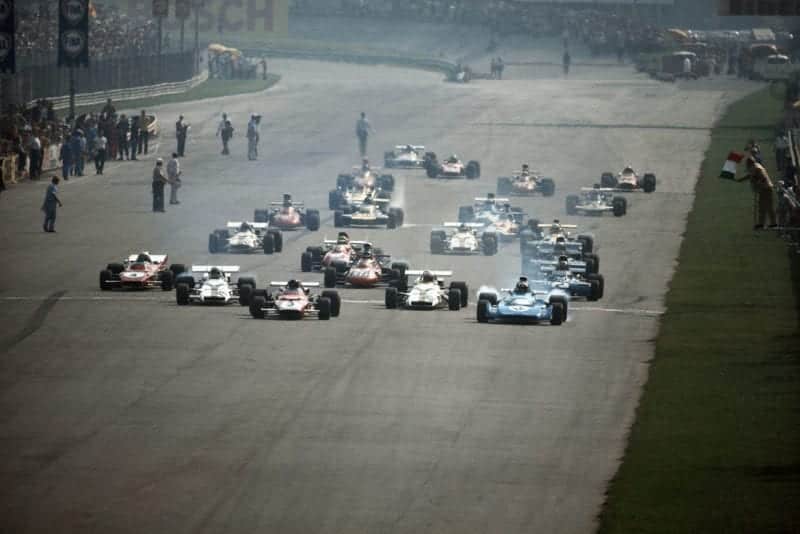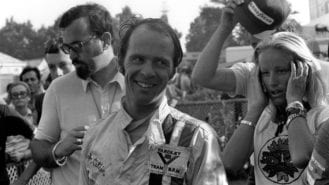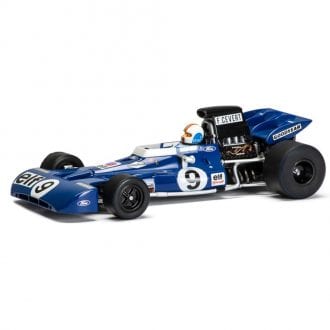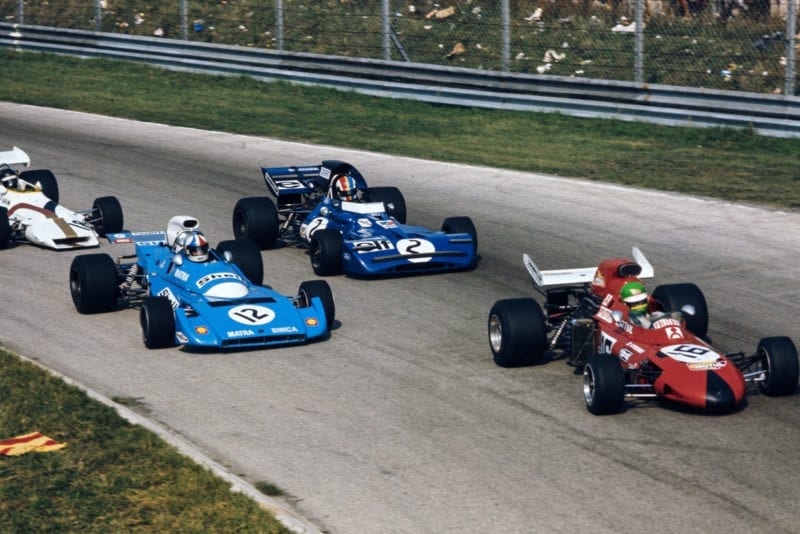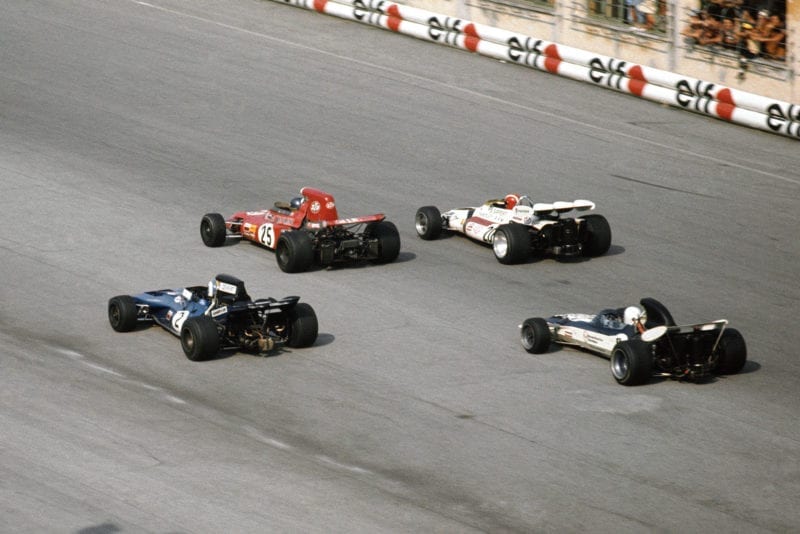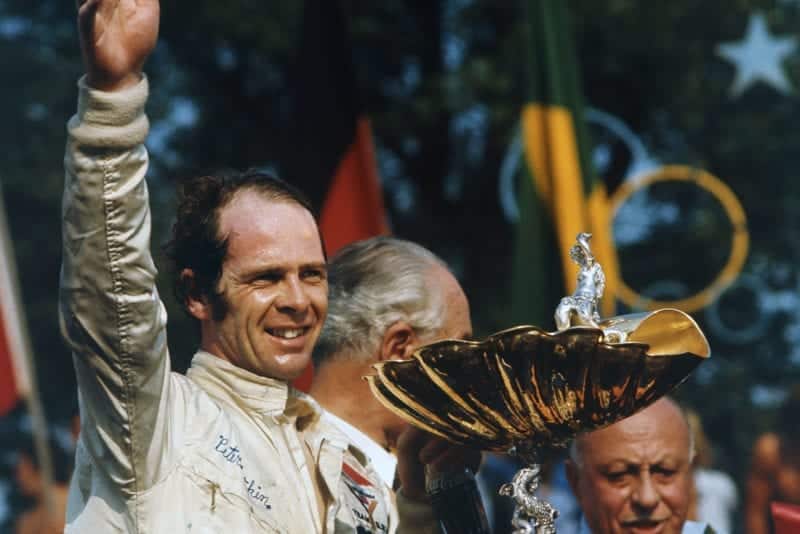Everyone who practised was on the grid, the line of paired cars stretching a long way down the track, and it was impressive that all but four of the entry had improved on the existing lap record and thirteen of them had improved on last year’s fastest practice lap, so it was obviously going to be quite a dice for the 55 laps, the race distance having been reduced from last year’s 68 laps in accordance with the CSI recommendations, though no-one seemed to know why 320 kilometres were decided as the maximum for a Grand Prix. Twelve-cylinder engines were dominating the scene, with Matra and Ferrari on the front row with two BRMs behind them, and as the cars were assembled on the “dummy grid” it was noticeable that Regazzoni’s Ferrari, 312/2 No. 5 not No. 7 that he recorded his fastest laps with, was well out of line in row four, alongside Stewart.
The twenty-three cars moved forward towards the start-line, Amon and Ickx brought their cars to a stop, engines screamed, the flag dropped and Regazzoni took his Ferrari down the outside of the grid line-up and was in the lead almost before the first row had got their wheels spinning. The grandstands shook with cheers and the whole Autodromo was really buzzing as Regazzoni led the opening lap of the 42nd Italian Grand Prix. There was no need to look down towards the Curva Parabolica to see who was leading at the end of the first lap, the tumult from the crowd spoke for itself, but Siffert had his BRM alongside the Ferrari as they crossed the line, the two Swiss drivers giving no quarter. Stewart was third, Ganley fourth and Peterson fifth, the two starting grid leaders, Amon and Ickx having been swamped by the excited mob behind them, and being sixth and eighth, respectively.
The race was on with a vengeance and Siffert was not going to mess about in second place behind a Ferrari driven by a chap from the “wrong side of the Alps”. Side-by-side they rocketed round the Monza track, the Ferrari leading lap two by half a car’s length, while Peterson was alongside Stewart, moving up to third place in the next lap. The third lap ended with the three “foreign tearaways” almost touching one another in echelon as they crossed the line, the order being Regazzoni, Siffert, Peterson and there was no nonsense about race-tactics, it was “Harry Flatters” for all concerned. On lap four there was a big reshuffle as Peterson took the lead with Stewart following him through into second place, and this pushed Siffert back to third and Regazzoni fourth, but it was all instant stuff for they were nearly touching one another. Ickx was in fifth place, and keeping out of the scrum because he doesn’t like this sort of racing, and Cevert had moved up into seventh place and took sixth place from Ganley on the next lap.

Amon leads the pack down the pit straight
Motorsport Images
Amon was in trouble with his left front tyre coming up in blisters and dropped back to watch developments so that Gethin soon passed him. Almost unnoticed Marko had brought his BRM into the pits as the engine was not running properly, but he set off again only to have the engine die completely before he could get back to the pits. Equally unnoticed Surtees started lap 4 with his engine blowing up and as he walked back to the pits to sympathetic applause from the crowd he got some consolation when the main bunch of the racers went by to see that Hailwood had the second Surtees TS9 in there with them. For the fifth lap the first five cars kept their positions, as if taking a short breather after the initial rush, but on lap six Regazzoni was past Siffert and into third place and from the back of the field Schenken retired his Brabham at the pits due to the suspension sub-frame under the gearbox breaking and Moser gave up with a broken shock-absorber mounting on the Bellasi.
The leading bunch were lapping at just over 1 min. 26 sec., a speed of close on 150 m.p.h., 185 m.p.h. or more down the back straight, and still with their wheels almost touching one another. The afternoon heat was pretty severe and Ganley’s BRM was running hotter than desirable and Siffert found that when close behind other cars his water temperature was rising unduly, so he dropped back slightly and Cevert moved into fourth place. For a brief moment on lap eight Stewart took the lead but on the next lap Regazzoni got his Ferrari ahead to the delight of the crowds and then Peterson went into the lead again at ten laps, with the average speed now over 150 m.p.h. and on lap eleven Cevert went by Stewart and took third place.
